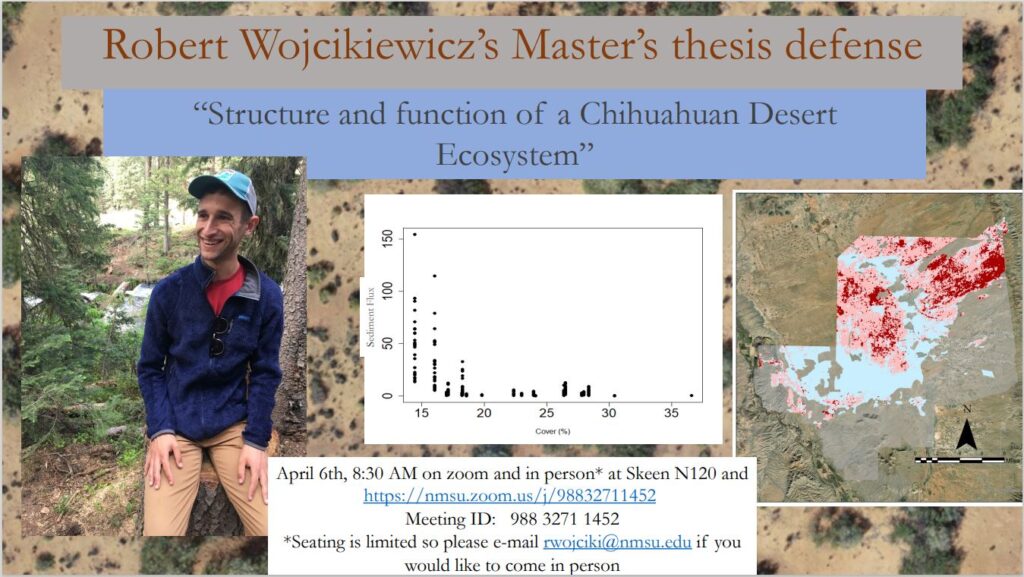Robert will defend his MS research on Wednesday, April 6 at 8:30 am (Mountain Time). Robert developed his research as part of the Jornada Basin Long-Term Ecological Research Program. He is a graduate student in the Department of Plant and Environmental Sciences (PES) and was supported by an NMSU-Agricultural Experiment Station Graduate Assistantship (AES-GA) fellowship.
Title: “Structure and Function of a Chihuahuan Desert Ecosystem”
When: Wednesday April 6 2022 @ 8:30 am Mountain Time
Where: In-person or via Zoom (https://nmsu.zoom.us/j/98832711452)

Abstract: Landscapes develop and evolve through a multitude of interacting variables, both biotic and abiotic, operating at multiple scales. Dryland landscapes in the desert southwest have seen significant levels of shrub encroachment (desertification) over the past 150 years due alterations of environmental variables. This thesis is concerned with the relationship between vegetation structure (e.g., the density, size and spatial distribution of shrubs in a dryland) and the response of associated ecological functions and biophysical processes in a landscape, specifically the Jornada Basin Long-Term Experimental Range (JRN-LTER). In chapter 2, titled Using aerial imagery and a novel landscape competition index to quantify shrub-shrub competition in the Jornada basin, a new approach to inferring below-ground interactions is presented as a method for quantifying intraspecific competition between honey mesquite plants at the JRN-LTER. The results of quantifying competition suggest a low degree of landscape-scale competition, and other mechanisms that may limit honey mesquite growth are presented as alternative drivers of shrub community assembly. Chapter 3, titled How sample size influences the observed functional relationship between horizontal sediment flux and vegetative cover, examines the functional relationship of sediment flux to changes in vegetation cover at a site over time, and how sensitive this relationship is to sample size. The results suggest that a sample size > ~17 is needed to obtain accurate, meaningful results regarding the relationship between sediment flux and vegetation cover at a 1 ha dryland site, and that fractional cover has both uses and flaws as an indicator. Both these studies provide value in helping determine the causes and consequences of desertification, and may help inform land management strategies going forward.